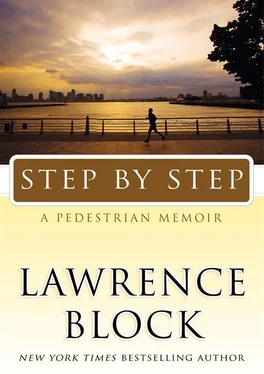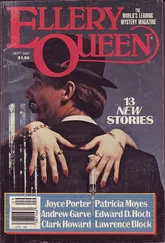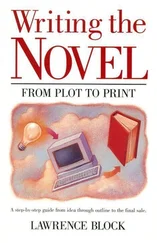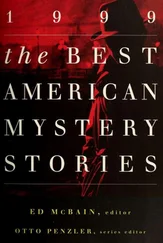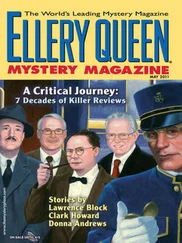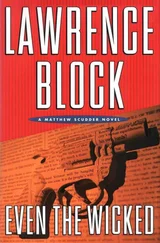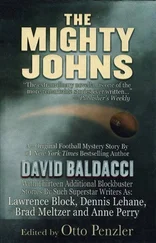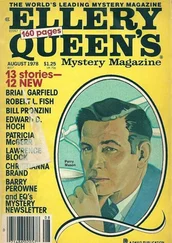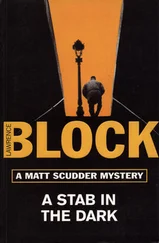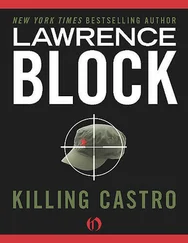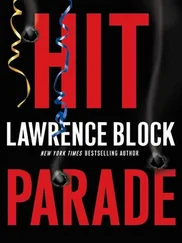Lawrence Block - Step by Step
Здесь есть возможность читать онлайн «Lawrence Block - Step by Step» весь текст электронной книги совершенно бесплатно (целиком полную версию без сокращений). В некоторых случаях можно слушать аудио, скачать через торрент в формате fb2 и присутствует краткое содержание. Год выпуска: 2009, ISBN: 2009, Издательство: William Morrow, Жанр: Биографии и Мемуары, Юмористические книги, на английском языке. Описание произведения, (предисловие) а так же отзывы посетителей доступны на портале библиотеки ЛибКат.
- Название:Step by Step
- Автор:
- Издательство:William Morrow
- Жанр:
- Год:2009
- ISBN:978-0-06-172181-6
- Рейтинг книги:3 / 5. Голосов: 1
-
Избранное:Добавить в избранное
- Отзывы:
-
Ваша оценка:
- 60
- 1
- 2
- 3
- 4
- 5
Step by Step: краткое содержание, описание и аннотация
Предлагаем к чтению аннотацию, описание, краткое содержание или предисловие (зависит от того, что написал сам автор книги «Step by Step»). Если вы не нашли необходимую информацию о книге — напишите в комментариях, мы постараемся отыскать её.
bestselling author comes a touching, insightful, and humorous memoir of an unlikely racewalker and world traveler.
Step by Step — читать онлайн бесплатно полную книгу (весь текст) целиком
Ниже представлен текст книги, разбитый по страницам. Система сохранения места последней прочитанной страницы, позволяет с удобством читать онлайн бесплатно книгу «Step by Step», без необходимости каждый раз заново искать на чём Вы остановились. Поставьте закладку, и сможете в любой момент перейти на страницу, на которой закончили чтение.
Интервал:
Закладка:
“Well,” I said, reluctant to give voice to my fear, “well, uh, that one of them might die.”
“It’s a possibility,” he or she said. (And I’m not being coy; I remember the conversation vividly, but not with whom I had it.) “But there’s one thing you should keep in mind.”
“Oh?”
“If one of them dies, she’ll still be dead when you get back.”
I found the logic of that observation unassailable, and was quick to report it to Lynne, who liked it as much as I did. And so we set out for Spain, and bade our everyday lives — well, if not goodbye, then certainly hasta luego .
Being out of touch, giving up the need to be in touch, may have been the most important lesson of the walk. I think what we let go of was the illusion of control. We couldn’t control what went on in our absence, and that would have been no less true were we to call home five times a day. There are people who believe contact gives them a measure of control, just as there are those for whom reading the newspaper is a way of playing a role in international politics.
And, when we reached our destination on July 23rd, the first thing I did was call home from our hotel in Santiago de Compostela. Nothing much was new, I learned. Everybody was fine.
We could never do it again. The Camino is still there, it’s been going strong for over a thousand years, and I don’t imagine people will quit walking it. Even if the Church should disappear, pilgrims would go on making their way to Compostela. (While some of the walkers we encountered were religious, most were not; many were there for the sheer adventure of the thing, while a substantial number didn’t seem to know why they were on their way to Santiago, but, like us, just felt it was something they wanted to do.)
So the road’s still there, and there are still pilgrims on it, and refugios to accommodate them. So you’d think we could do it again readily enough, if we felt so inclined. If anything, it ought to be simpler for us. Our mothers are both gone, and our daughters older and more self-sufficient than ever. We’re in better shape financially, and readily able to afford three months without doing any income-producing work. We’re older, and discernibly less energetic, but that’s offset to a degree by the physical training each of us has been doing, I walking and racing, Lynne working out regularly at the gym. We’d treat ourselves to better backpacks, and be more sensibly outfitted overall. If the hills took a toll at first, well, we’d toughen up as we went along, just as we did sixteen years ago.
Then why couldn’t we do it?
Because we could never manage the isolation. Oh, we could endure it. But we couldn’t sustain it, because of the way the world has changed.
It would be easy enough to leave our cell phones home. I rarely bother to carry mine, unless I’m going out of town, and ours wouldn’t work in Spain anyway. Of course there’d be cell phones for sale over there, in every town we walked through, but maybe we could discipline ourselves sufficiently to pass them by.
But each of those towns would have an Internet café, too, and how long would I be able to go without checking my email? It wasn’t until three or four years after we got back from Spain that I even had email, and now it’s hard to believe that there was ever a time when I got along without it.
If the world has changed, well, so have I. I’m used to being in more or less constant touch with a slew of friends and acquaintances. I’m accustomed to being able to find out almost anything — and locate almost anyone — via Google. I’m not crazy about the idea that I’m so dependent upon the cyber world that I couldn’t stand three months away from it, but I’m afraid it might be true.
Oh, I suppose we could do it if we had to. But the fact of the matter is that we don’t have to, and that we already did it back in 1991.
I’m glad we went when we had the chance.
I’m not entirely sure why, but it’s difficult for me to write about the Spanish walk.
This is not the first time I’ve tried. I was commissioned to report on the experience for the travel section of the New York Times, and produced an article not long after our return. It was more work than I’d thought it would be, and the editors weren’t crazy about it. They wanted photos, and of course we hadn’t taken any; we’d decided our packs were quite heavy enough without adding on film and a camera. (And we’d actually quit carrying a camera years ago, having decided we got a better look at the world without squinting at it through a viewfinder. The sole exception we made was the Polaroid that served to document our triumphs during the Buffalo hunt.)
So could I suggest photos they might seek to obtain? And talk about places to stay and sights to see? And, uh, maybe do something to make it more of a travel piece?
I thought about it and decided I couldn’t do any of that. I felt they were well within their rights to ask for changes of that sort, and had to admit that the piece as they envisioned it might better serve the interests of their readers than what I had provided. But our pilgrimage, I was discovering, was very much a personal matter. I barely wanted to write about it at all, and I certainly didn’t want to write about those aspects of the experience that hadn’t greatly concerned us.
One nice thing about writing for newspapers is that the money’s so small to begin with that it won’t change your life to give it up. I forget what I was supposed to get, but I took a kill fee of 20 or 25 percent instead, and we let it go at that. No harm, no foul, and no hard feelings.
Now, of course, I can write about it however I want, and that ought to make it easier. (I could even splice in what I wrote for the Times, and work from that, but it was written a couple of years before I got my first computer, so it’s not hanging out somewhere on my hard drive. There’s almost certainly a hard copy somewhere in the Stygian swamp I call an office, but I wouldn’t know where to start looking, and I’m not sure I really want to find it.)
Writing about it, I suspect, may be like the walk itself, or like any walk, random or otherwise. If I can just stay pointed in the right direction and keep putting one foot in front of the other, I should get there. I may lose my way from time to time, but that’s nothing new; it happened more than a few times en route to Compostela.
Where were we? Oh, right. In the French Pyrenees, at an inn run by a woman who was just a shade too well bred to say that we were out of our minds.
She fed us well, or at least as well as a Frenchwoman could be expected to feed a pair of sportif vegetarians. I believe she served us cauliflower, and I remember that it was good, but we were hungry enough by then to savor Styrofoam.
Here’s a thought. A chronological account of our journey seems beyond my abilities, and I’m not sure what purpose it would serve. Since I’m evidently going to digress, let me make digression my structure, and organize my narrative, if that’s what it is, by topics. If that’s what they are.
In one respect, we’d have an easier time on the walk today than we did back then. Lynne and I both stopped eating meat and fish back in the late 1970’s, and didn’t resume until shortly after the turn of the century. It was occasionally a nuisance, and never more so than on the pilgrimage. If the French regarded vegetarians as pitiable lunatics, the residents of rural northern Spain didn’t even have a frame of reference for us, much less anything to feed us.
Somewhere along the way we found out that bocadillos de queso were cheese sandwiches, and it’s hard to imagine the relief we felt when they were available. It’s not as though there was anything particularly good about them — the cheese was pretty ordinary, the rolls plain white bread, and stale as often as not. But they were, thanks be to God, something we could eat. Add a salad — iceberg lettuce, inevitably — and we called it a balanced meal.
Читать дальшеИнтервал:
Закладка:
Похожие книги на «Step by Step»
Представляем Вашему вниманию похожие книги на «Step by Step» списком для выбора. Мы отобрали схожую по названию и смыслу литературу в надежде предоставить читателям больше вариантов отыскать новые, интересные, ещё непрочитанные произведения.
Обсуждение, отзывы о книге «Step by Step» и просто собственные мнения читателей. Оставьте ваши комментарии, напишите, что Вы думаете о произведении, его смысле или главных героях. Укажите что конкретно понравилось, а что нет, и почему Вы так считаете.
